Akin to the countries of the Mediterranean, olives are integral to Turkish culture and its rich culinary traditions.
A majestic olive tree called the “Ata Agaç” (or Elder Tree) sits on an olive grove owned by the couple Hatice and Aydin Aktürk.
Situated in Mugla, Turkey, a Southwestern province stretching along the Aegean coast, the olive grove is home to trees ranging between 100 to 3,500 years old. One of those trees being Ata Agaç, estimated to be 3,200 years old according to archeological evidence found by Aydin. This age would compete with another olive tree in Vouves in Chania, in Greece, said to be the oldest olive tree in the world. For Hatice and Aydin, the grove is not only a time capsule unearthing the ages of the ancient trees, but it reveals why Milas, a small district within Mugla, is central to the olive culture in Turkey. And why Turkey, should be recognized as having a legitimate claim to being the birthplace of the olive tree.
The olive and its significance in Turkey
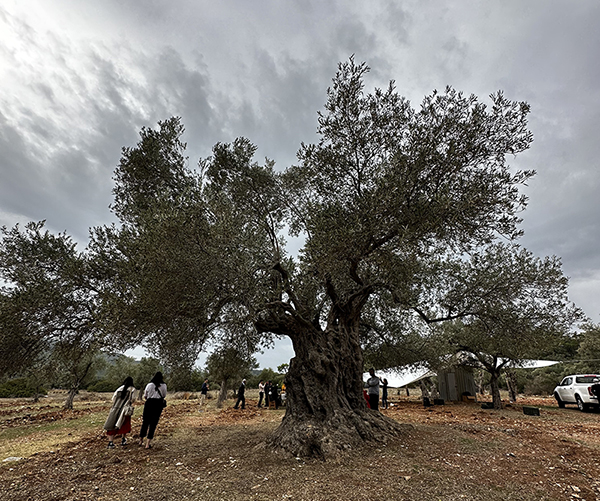
The olive tree bears the dedicated work of generations of people. The lineage of the first known olives is found on the border between Turkey and Syria based on written tablets, olive pits, and wood fragments found in ancient tombs. Historically, olive branches symbolize peace. Olive cultivation is concentrated in areas that have lush lowlands and are surrounded by sparkling waters. In Turkey, those areas include Aydin, Izmir, Mugla, Bursa, Manisa, Çanakkale, Gaziantep and Mersin. Also in the regions of the Aegean, Marmara and Southeast Anatolia.
Common types of Turkish olives include Domat olives, these originate from the Aegean region. They are larger and ideal for stuffing with cheese, garlic or peppers. Meanwhile Gemlik and Memecik olives have a high oil content and a distinct olive taste. Another kind are Memeli olives, grown around Izmir, and tending to be preserved in brine.
Today, Turkey is one of the world’s top 5 producers of olives and olive oils, and olives are integral to Turkish culture and cuisine, in many different shapes and sizes.
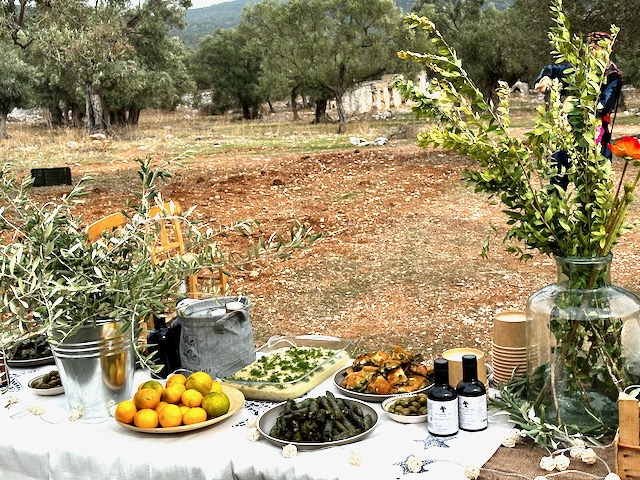
Olive Oil
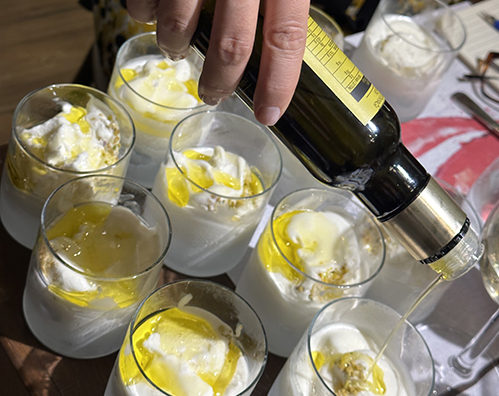
Perhaps the most known product from the olive tree is olive oil, nicknamed “liquid gold.” While the world’s favorite pantry item is widely recognized to be sourced from Italy, Turkey contributes 8 percent to the world’s total olive oil production and is second to Spain in table olive production. Turkey also ranks first in olive oil consumption.
In prehistoric times, olives were crushed underfoot wearing wooden sandals, with pestle and mortar, using a stone roller, or in presses. And surprisingly, the extraction method used today is almost the same as it was 6000 years ago. The olives are crushed into a mash to which pressure is applied to extract the oil without any chemical processes. Although the olive oil production process has undergone some changes due to technology, the ancient method is still used for some parts of the process.
Turkish olive oil can be divided into three different main categories:
- Natural Pressed, EVOO: The equivalent of extra virgin olive oil. It is raw and not treated with heat or chemicals. This oil is best served cold, drizzled over salads, or dipped with herbs and local bread.
- Early Harvest Olive Oil: Olive oil produced from immature, unripe (green) olives. This premium oil has a slightly bitter, peppery taste and is usually more expensive.
- Virgin Olive Oil: The acidity level of virgin olive oil is between 0.8% and 2% making this the most common oil sold in Turkey. There are several brands including the Ancient Cure 3200 founded by Hatice and Aydin Aturk. This oil lighter in both flavor and color than the other varieties and is typically used for cooking.
Beyond ancient olive groves, Turkey is also home to fascinating olive and olive oil museums. Like groves, the museums extensively highlights the significance of the olive tree and olive oil in the country. One unique museum is the Köstem Olive Oil Museum, which also happens to be the world’s largest olive oil museum.
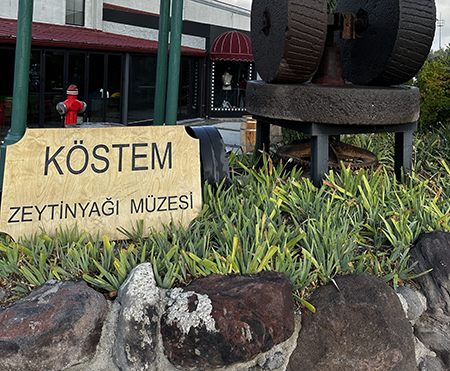
Located in Urla, a hidden gem of the Aegean, the museum showcases the crushing, pressing, separating and storage processes of olive production and distribution that evolved across 4,000-years. Like the Ata Agaç olive tree, the museum essentially preserves and solidifies the olive and olive oil culture in the country, particularly ones from Urla, rumored to be the first region in Turkey to produce olive oil.
Olive Oil Based Dishes
As one of the richest and oldest cuisines in the world, Turkish Cuisine is the heart and soul of eastern Mediterranean cooking. Cooking food in olive oil is an integral method to the cuisine, and it even has a name, Zeytinyagli (olive oil dishes). Stuffed vine leaves are a popular olive oil dish but there are countless others which can be found across the country.
Located in Bodrum, Foodrum, is a delightful culinary park that welcomes aspiring cooks and eaters eager to dive into the flavors of the TurkAegean region. Founded by trailblazing chef and owner Pelin Dumanli, olive dishes are done differently here.
Olives become addictive fritters and a basic cup of goat milk ice cream is enhanced by a lofty pour of virgin olive oil. Although it’s said olive dishes were born Anatolia, they can be found in almost every restaurant, in the country. That includes street food and popular spots like Ficcin in Istanbul. This is a traditional restaurant favored by locals and tourists alike, serving Turkish home cooking, and Circassian delicacies. The noteworthy olive dishes include the Grapevine leaves, fava beans, Mediterranean herbs with pomegranate.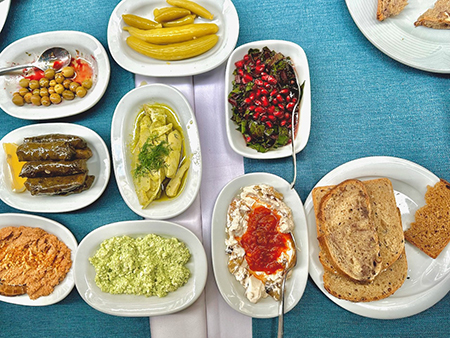
he olive tree is centuries of tradition. It is where a breakfast table becomes alive. It was a way of boosting economic growth. It has helped a country prosper and become one of the world’s top gastronomic powers.
The post Turkey: The Unexpected Olive Power appeared first on Honest Cooking.
